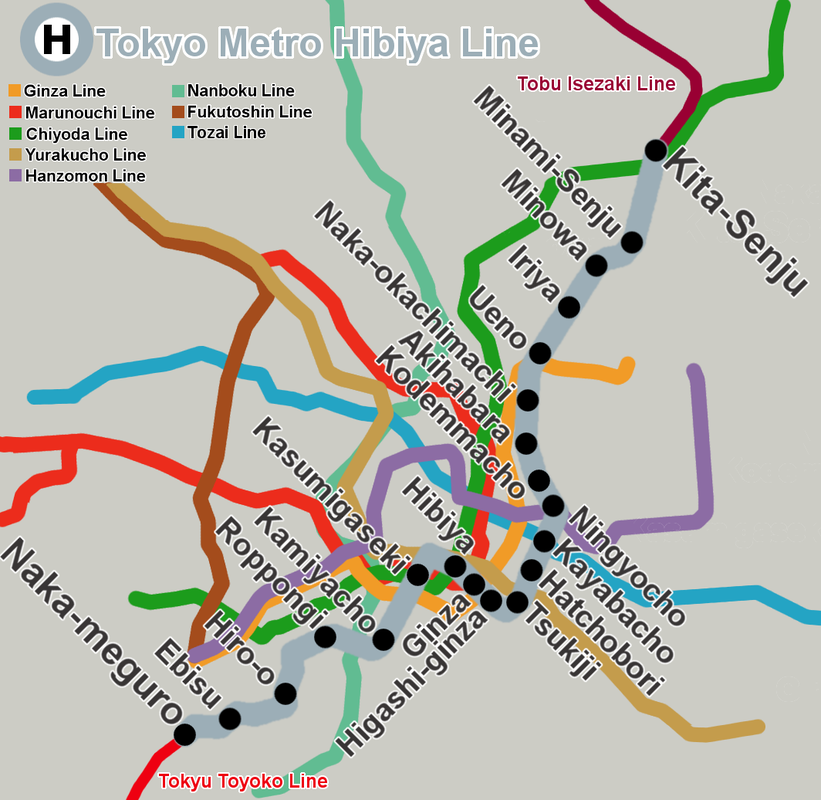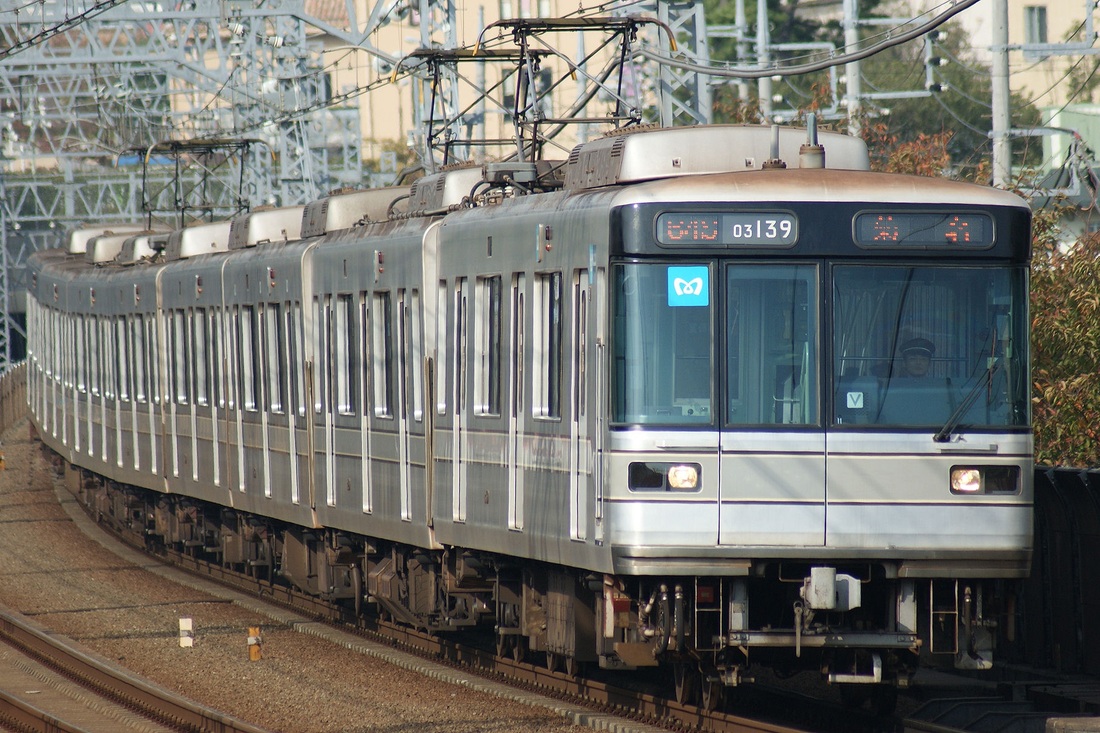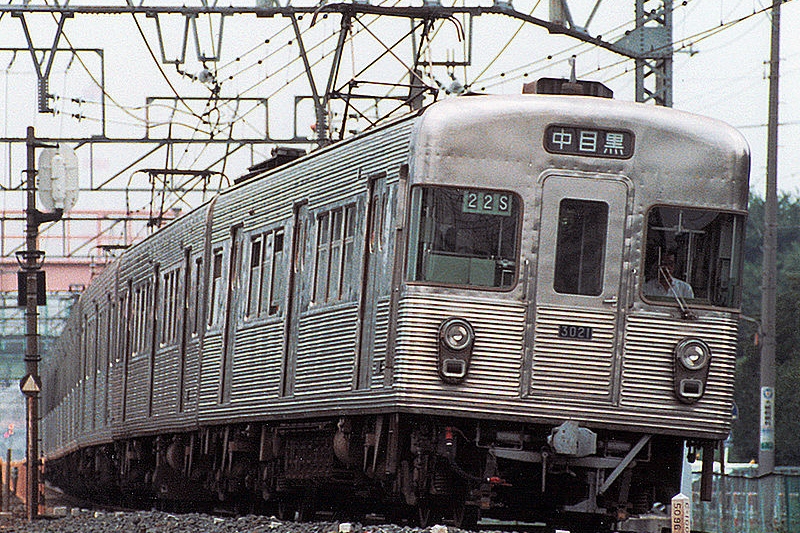|
Opened: March 28, 1961
Length: 20.3km Stations: 21 Gauge: 1067mm (Narrow) Electric System: 1500v DC Tokyo Metro/TRTA Trains03 Series (1988 - Present)
3000 Series (1961 - 1994)
Tokyu Corporation Trains1000 Series (1988 - 2013)
Tobu Railways Trains20000 Series (1988 - Present)
3000 Series photo courtesy of Spaceaero 2
All other photos courtesy of Uraken.net |
Tokyo Metro Hibiya LineTokyu Toyoko Line - Naka-meguro - Ebisu - Hiro-o - Roppongi - Kamiyacho - Kasumigaseki - Hibiya - Ginza - Higashi-ginza - Tsukiji - Hatchobori - Kayabacho - Ningyocho - Kodemmacho - Akihabara - Naka-okachimachi - Ueno - Iriya -
Minowa - Minami-Senju - Kita-Senju -Tobu Isezaki Line The Hibiya Line is a subway built by the Teito Rapid Transit Authority (TRTA) that connects Naka-meguro in the southern part of Tokyo with Kita-Senju in northern Tokyo. It was the first line built by the TRTA to use overhead wires instead of a third rail.
The first portion of Minami-Senju through Naka-okachimachi was opened in 1961 and it was connected with the Tobu Isezaki Line through Kita-Senju the next year. The line was completed and connected with the Tokyu Toyoko Line through Naka-meguro in 1964. The Hibiya Line stops at many of the economic, fashion and even political centers of Japan, making it an important commuter line for those that live in the outer-lying areas. The TRTA originally thought that a good portion of its ridership would come from its direct service with the Toyoko Line, but it turned out that more came from the Isezaki Line end of the Hibiya Line. Direct service with the Toyoko Line is scheduled to end in March of 2013. The trains operated on the Hibiya Line all use 18m long cars which are shorter than the standard 20m cars operated on other lines such as the Hanzomon Line. This is because shorter cars allowed for tighter curves to be built which meant less land to buy and quicker construction. Tokyo Metro currently does not use the terms in-bound and out-bound trains and instead uses A-line and B-line. On the Hibiya Line, trains heading towards Naka-meguro are on the A-line while trains heading to Kita-Senju are on the B-line. Major Stations Kita-Senju Kita Senju is the the last stop on the "B" line of the Hibiya Line and also where it connects with the Tobu Isezaki Line. It is located in North-eastern Tokyo and is a major transfer point for those coming in from areas north of Tokyo. You can change to the Tokyo Metro Chiyoda Line, JR Joban Line, Tobu Isezaki Line and the Tsukuba Express Line at this station. Kasumigaseki Located dead in the center of Japan's bureaucracy capital, Kasumigaseki Station is where all the bureaucrats hop off the train. You'll find many of the cabinet ministry offices right nearby this station. You can change to the Tokyo Metro Marunouchi and Chiyoda Lines at this station. Sakuradamon on the Yurakucho Line and Toranomon on the Ginza Line are also within walking distance. |






